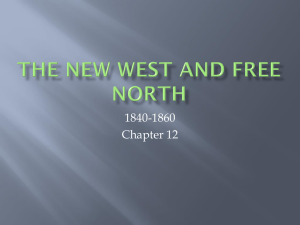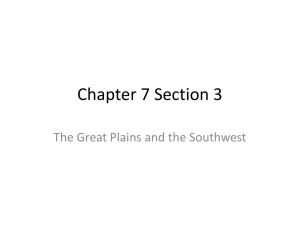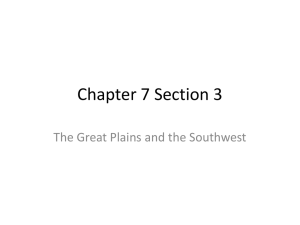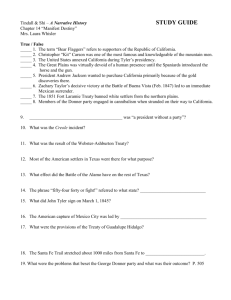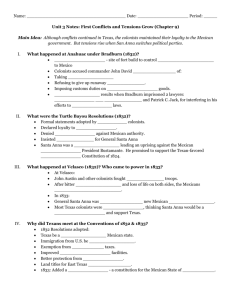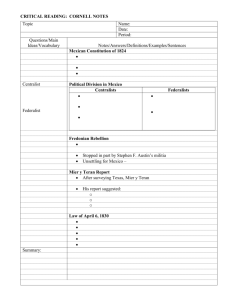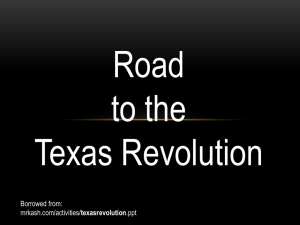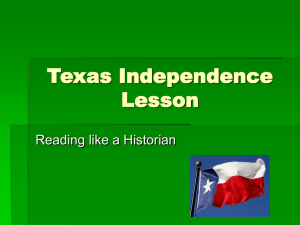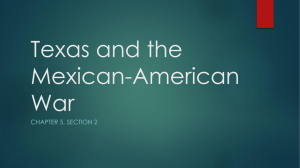Texas Revolution: A Short Intro to the Armed Conflict
advertisement
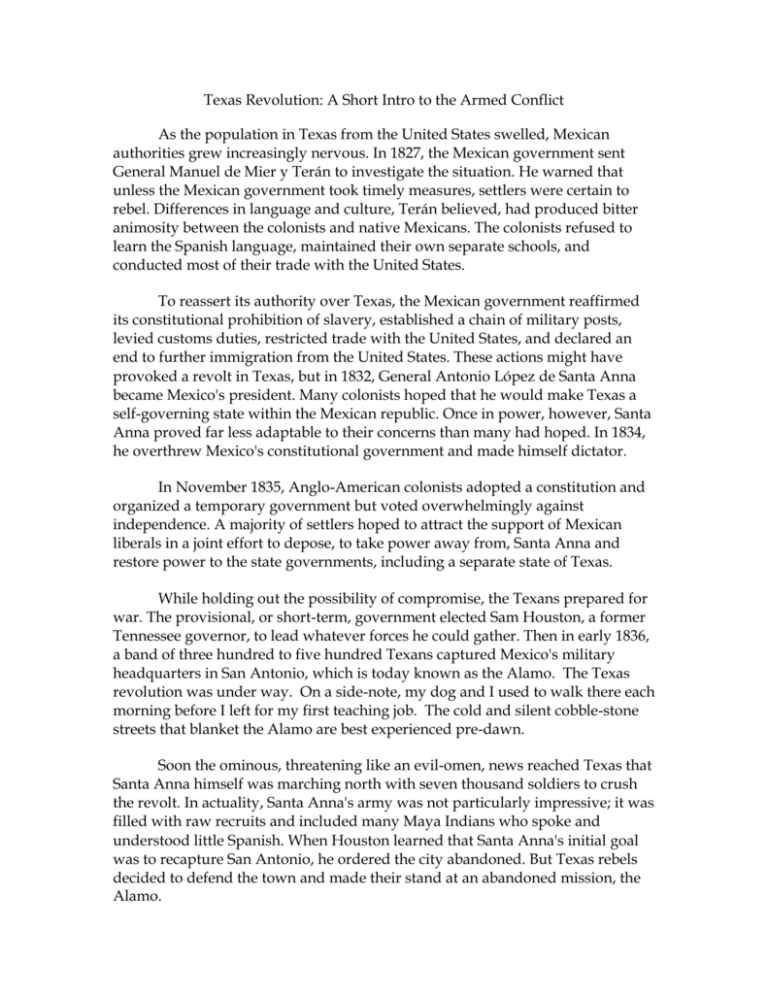
Texas Revolution: A Short Intro to the Armed Conflict As the population in Texas from the United States swelled, Mexican authorities grew increasingly nervous. In 1827, the Mexican government sent General Manuel de Mier y Terán to investigate the situation. He warned that unless the Mexican government took timely measures, settlers were certain to rebel. Differences in language and culture, Terán believed, had produced bitter animosity between the colonists and native Mexicans. The colonists refused to learn the Spanish language, maintained their own separate schools, and conducted most of their trade with the United States. To reassert its authority over Texas, the Mexican government reaffirmed its constitutional prohibition of slavery, established a chain of military posts, levied customs duties, restricted trade with the United States, and declared an end to further immigration from the United States. These actions might have provoked a revolt in Texas, but in 1832, General Antonio López de Santa Anna became Mexico's president. Many colonists hoped that he would make Texas a self-governing state within the Mexican republic. Once in power, however, Santa Anna proved far less adaptable to their concerns than many had hoped. In 1834, he overthrew Mexico's constitutional government and made himself dictator. In November 1835, Anglo-American colonists adopted a constitution and organized a temporary government but voted overwhelmingly against independence. A majority of settlers hoped to attract the support of Mexican liberals in a joint effort to depose, to take power away from, Santa Anna and restore power to the state governments, including a separate state of Texas. While holding out the possibility of compromise, the Texans prepared for war. The provisional, or short-term, government elected Sam Houston, a former Tennessee governor, to lead whatever forces he could gather. Then in early 1836, a band of three hundred to five hundred Texans captured Mexico's military headquarters in San Antonio, which is today known as the Alamo. The Texas revolution was under way. On a side-note, my dog and I used to walk there each morning before I left for my first teaching job. The cold and silent cobble-stone streets that blanket the Alamo are best experienced pre-dawn. Soon the ominous, threatening like an evil-omen, news reached Texas that Santa Anna himself was marching north with seven thousand soldiers to crush the revolt. In actuality, Santa Anna's army was not particularly impressive; it was filled with raw recruits and included many Maya Indians who spoke and understood little Spanish. When Houston learned that Santa Anna's initial goal was to recapture San Antonio, he ordered the city abandoned. But Texas rebels decided to defend the town and made their stand at an abandoned mission, the Alamo.

